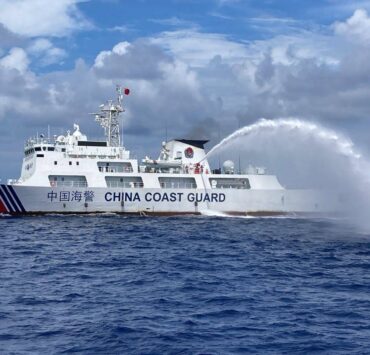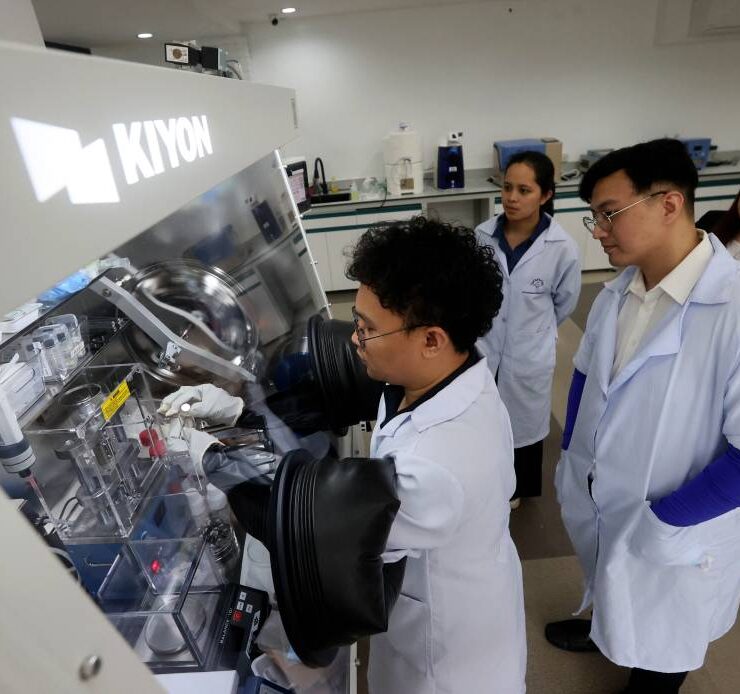Asia-Pacific race to net zero transforming global investment landscape

Amid record oil production in the United States, a decline in electric vehicle sales, political resistance to net-zero policies, and a series of global crises, there is a growing concern that efforts to combat climate change have stalled.
This sense of climate pessimism could become a self-fulfilling prophecy unless governments and industries regain momentum.
While governments must create policies that incentivize decarbonization, the private sector is not merely waiting for them to act.
A recent survey led by Stanford University and the MSCI Sustainability Institute found that the overwhelming majority of global investors already consider climate or carbon emissions in their investment decisions.
However, only 4 percent of investors believe that climate risks are mostly reflected in current asset prices.
This presents an important challenge for investment-tools providers like MSCI, which must deliver data and solutions that illustrate the full spectrum of climate risks and opportunities across asset classes. The transition to a net-zero global economy will require the largest reallocation of capital and repricing of assets in history, driven by the investment and financial industries.
Economic diversity
Climate-related investments will vary across regions as the world seeks to balance mitigation with adaptation, but they have already become a key focus in Asia-Pacific (Apac).
In fact, according to a report from the Asia Investor Group on Climate Change sponsored by MSCI, 70 percent of Asian investors, including 84 percent of asset managers, now “publicly recognize climate as a source of material risks and opportunities.” Furthermore, 57 percent of Asian investors, including 68 percent of asset managers, incorporate climate into their investment decisions.
Apac’s climate profile mirrors its economic diversity. The region accounts for a majority of global greenhouse gas emissions and an even larger share of coal-fired power generation. However, it also contributes significantly to low-carbon and green innovation.
A recent MSCI research paper published ahead of our Capital for Climate Action Apac Conference demonstrated that companies in the region have emerged as influential players in clean-tech innovation.
For instance, the paper cited examples of industry-leading companies using their supply chain to scale clean-tech deployment and accelerate the speed of research and development of state-of-the-art technology.
Most notably, China has become the global leader in renewable power, and also the world’s No. 1 electric-vehicle market. In addition, Japan has become a global leader in climate finance and clean-energy research, and South Korea now ranks among the top five global producers of low-carbon nuclear power.
Looking ahead, Apac has immense potential to drive the growth of carbon capture, use, and storage (CCUS) technology. McKinsey has even estimated that the region could account for 55 percent of global CCUS uptake by mid-century.
In the voluntary carbon market, MSCI researchers have shown that the number of carbon credits issued within Apac “has risen substantially since 2014,” with India, China, Australia, and Indonesia leading the way.
Meanwhile, in the capital markets, Singapore and Hong Kong are both moving aggressively to become Apac’s premier climate-investment hubs.
Given the scale of the net-zero challenge and the need for faster decarbonization, Asian countries will need to accelerate their climate efforts to meet global emissions targets. Achieving net-zero emissions in Apac by 2050 will require over $70 trillion in cumulative investments, according to a report commissioned by the Asia Society Policy Institute.
Challenges, potential
A survey conducted last year by Boston Consulting Group and the Rockefeller Foundation involving more than 100 climate-finance leaders revealed both the challenges and potential of net-zero investing.
On the negative side, the survey highlighted concerns among climate investors about market headwinds, such as rising interest rates and overall economic uncertainty, and it also underscored persistent obstacles to project development, including foreign-exchange risk in emerging economies and policy complexity everywhere.
On the positive side, it found that “investors from across the public and private sectors believe climate finance opportunities exist across every major theme and market. They believe those opportunities cut across regions. And, notably, despite market fluctuations, they believe the investment pipeline is growing.”
MSCI helps investors navigate this pipeline by providing a diverse array of climate datasets, ratings, models, indexes, and other solutions. For instance, our climate indexes measure the performance of listed companies progressing toward key climate goals, such as reducing emissions, managing transition risks, generating green revenue, or aligning with global net-zero targets.
In 2023, both the MSCI ACWI Climate Action Index and the MSCI ACWI Climate Change Index outperformed their parent index, the MSCI ACWI Index, by margins of 2.7 percent and 6.5 percent, respectively.
The biggest gaps in climate investing remain data and pricing. As high-quality data becomes more widely available, asset prices can better reflect long-term risks and opportunities, promoting the capital reallocation essential for a net-zero economy.
Of course, we cannot know how the Apac region’s path to net zero will evolve over time. But we do know that its pursuit of that ambitious goal will continue reverberating across the global investment landscape. INQ
The author is chair and CEO of MSCI, a leading provider of critical decision support tools and services for the global investment community.




















